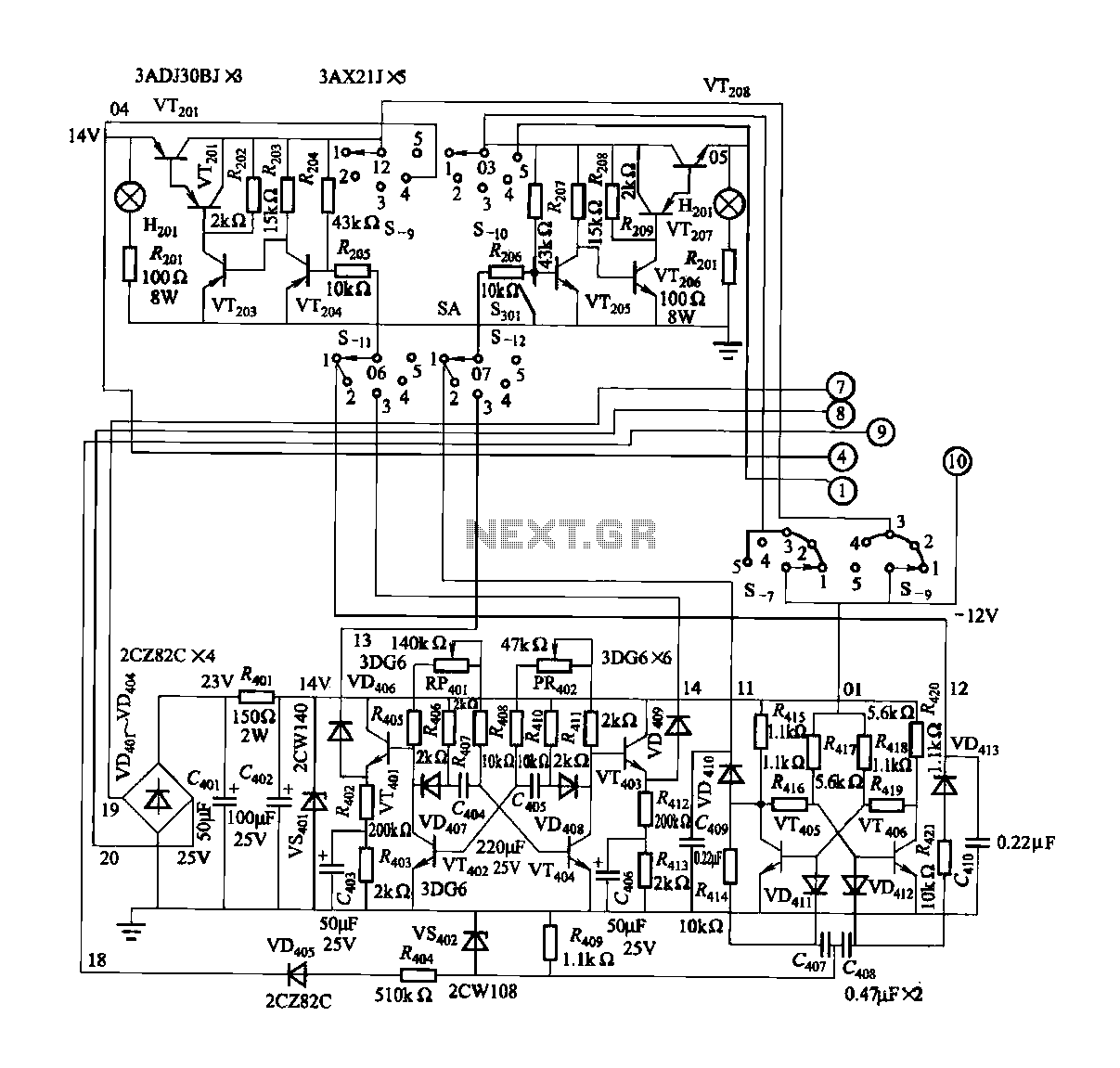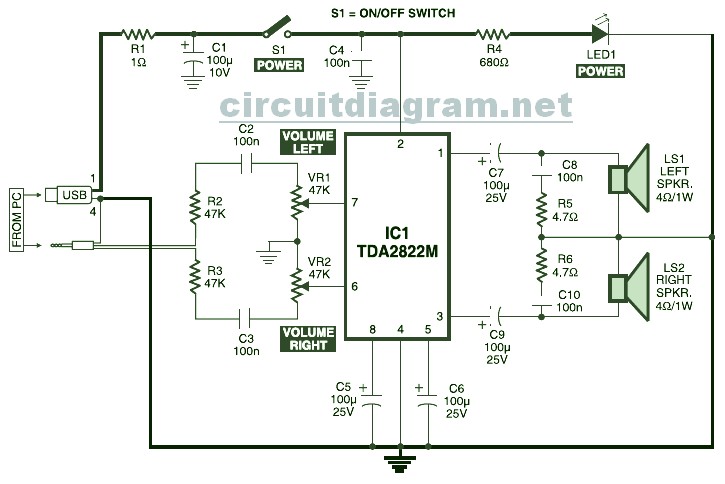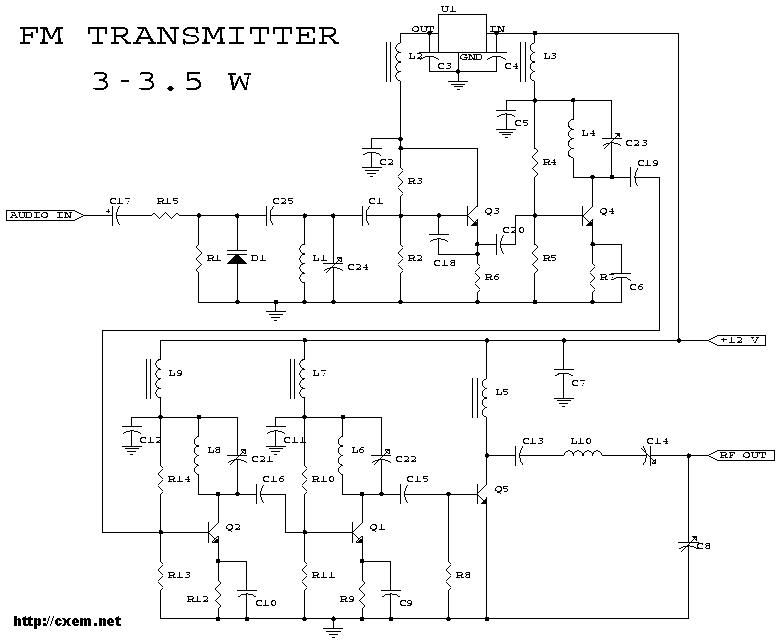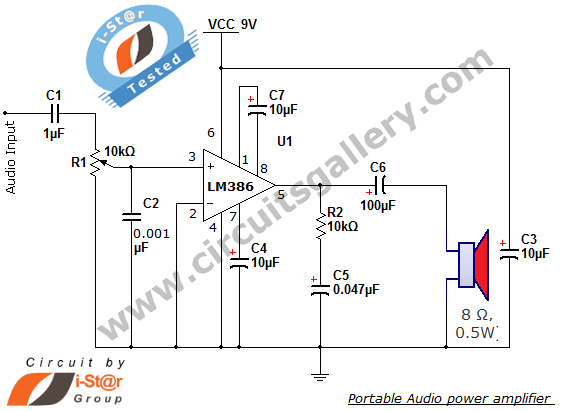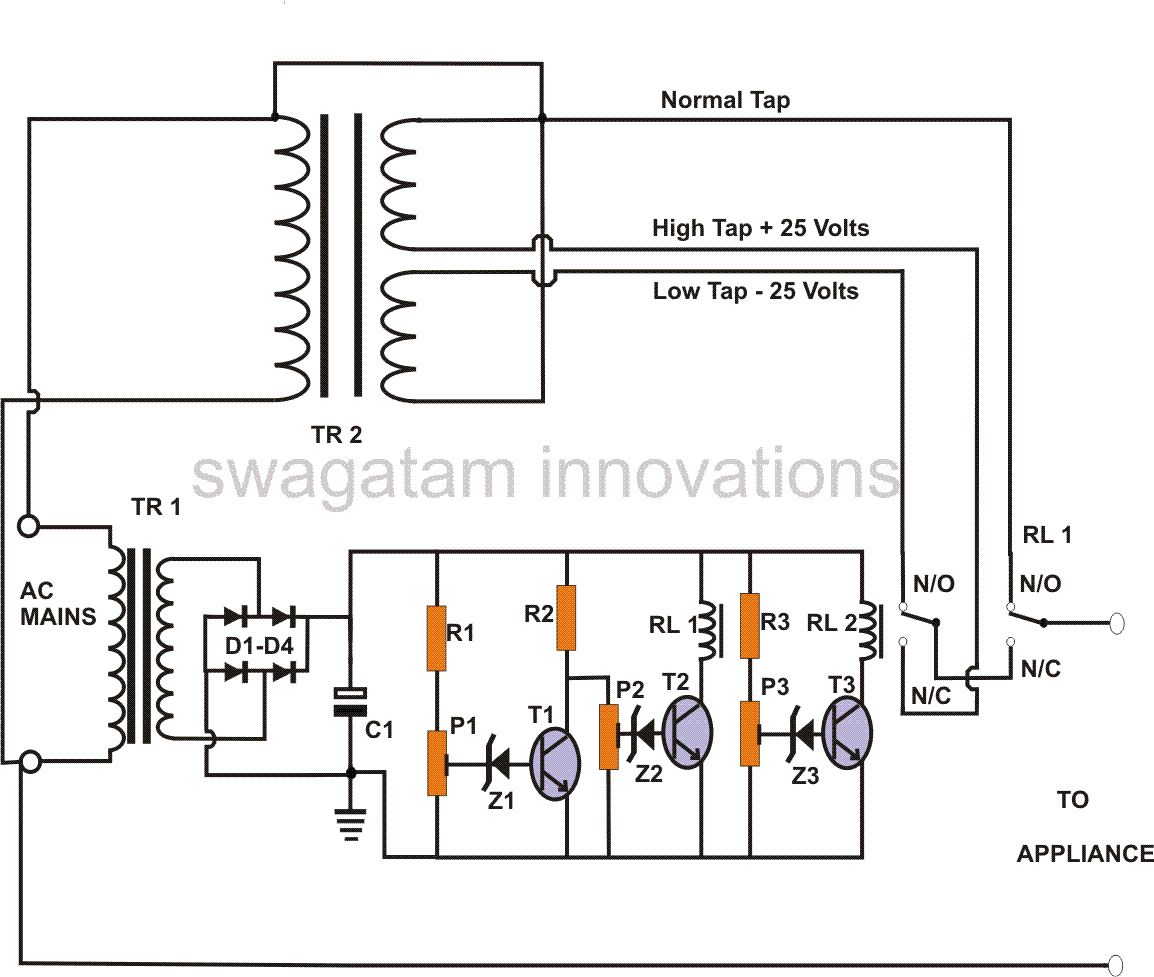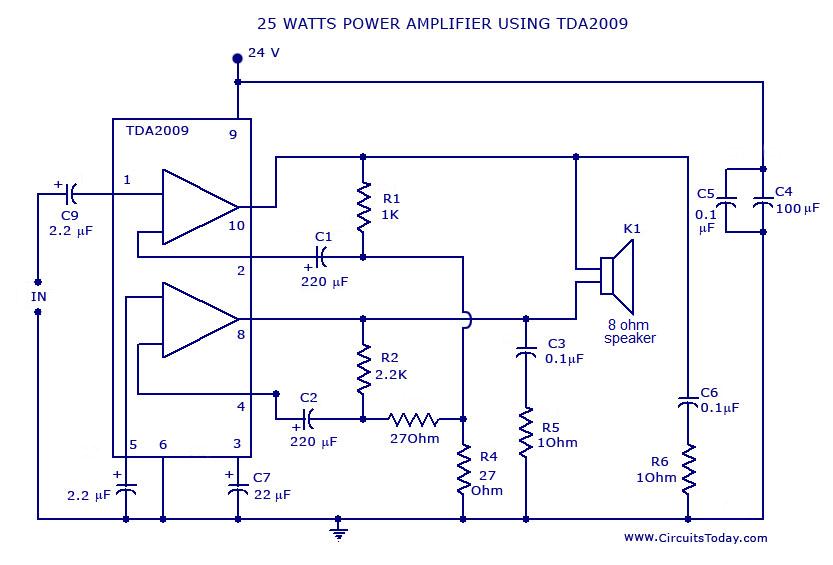
2 watt switching power supply
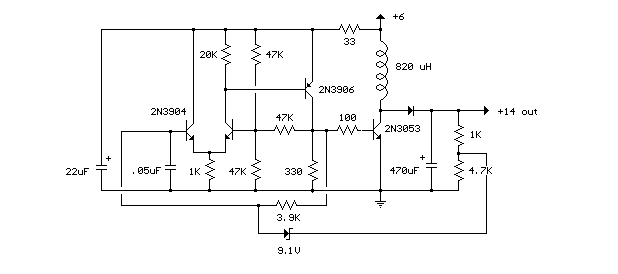
This compact switching power supply utilizes a Schmitt trigger oscillator to control a switching transistor, which provides current to a small inductor. When the transistor is activated, energy accumulates in the inductor, and this energy is subsequently released into the load circuit when the transistor deactivates. The output voltage is influenced by the load resistance and is capped by a zener diode that halts the oscillator when the voltage approaches approximately 14 volts. Adjustments to the voltage divider supplying the zener diode allow for the attainment of higher or lower output voltages. The system achieves an efficiency of around 80% by employing a high-Q inductor.
This switching power supply circuit operates by leveraging the principles of inductive energy storage and controlled switching. The Schmitt trigger oscillator generates a square wave signal that toggles the switching transistor, often a MOSFET or BJT, between its on and off states. When the transistor is in the on state, current flows through the inductor, leading to the storage of energy in its magnetic field. The inductor's ability to store energy is primarily determined by its inductance value and the current flowing through it.
Upon switching off the transistor, the inductor releases its stored energy into the load circuit, providing power to the connected device. The output voltage can vary based on the load resistance; as the load resistance decreases, the output voltage tends to increase, and vice versa. The inclusion of a zener diode in the circuit serves a critical role in voltage regulation. It ensures that the output voltage does not exceed a predetermined level (approximately 14 volts) by clamping the voltage and stopping the oscillator when this threshold is reached.
To allow for flexibility in output voltage levels, a voltage divider is implemented, which feeds back a portion of the output voltage to the zener diode. By adjusting the resistor values in this divider network, it is possible to fine-tune the output voltage to meet specific requirements. The design's efficiency, rated at about 80%, is a result of the high-quality inductor used, which minimizes energy losses during the switching process. The circuit's compact nature and high efficiency make it suitable for various applications, including portable devices and low-power electronics.In this small switching power supply, a Schmitt trigger oscillator is used to drive a switching transistor that supplies current to a small inductor. Energy is stored in the inductor while the transistor is on, and released into the load circuit when the transistor switches off.
The output voltage is dependent on the load resistance and is limited by a zener diode that stops the oscillator when the voltage reaches about 14 volts. Higher or lower voltages can be obtained by adjusting the voltage divider that feeds the zener diode.
The efficiency is about 80% using a high Q inductor.. 🔗 External reference
This switching power supply circuit operates by leveraging the principles of inductive energy storage and controlled switching. The Schmitt trigger oscillator generates a square wave signal that toggles the switching transistor, often a MOSFET or BJT, between its on and off states. When the transistor is in the on state, current flows through the inductor, leading to the storage of energy in its magnetic field. The inductor's ability to store energy is primarily determined by its inductance value and the current flowing through it.
Upon switching off the transistor, the inductor releases its stored energy into the load circuit, providing power to the connected device. The output voltage can vary based on the load resistance; as the load resistance decreases, the output voltage tends to increase, and vice versa. The inclusion of a zener diode in the circuit serves a critical role in voltage regulation. It ensures that the output voltage does not exceed a predetermined level (approximately 14 volts) by clamping the voltage and stopping the oscillator when this threshold is reached.
To allow for flexibility in output voltage levels, a voltage divider is implemented, which feeds back a portion of the output voltage to the zener diode. By adjusting the resistor values in this divider network, it is possible to fine-tune the output voltage to meet specific requirements. The design's efficiency, rated at about 80%, is a result of the high-quality inductor used, which minimizes energy losses during the switching process. The circuit's compact nature and high efficiency make it suitable for various applications, including portable devices and low-power electronics.In this small switching power supply, a Schmitt trigger oscillator is used to drive a switching transistor that supplies current to a small inductor. Energy is stored in the inductor while the transistor is on, and released into the load circuit when the transistor switches off.
The output voltage is dependent on the load resistance and is limited by a zener diode that stops the oscillator when the voltage reaches about 14 volts. Higher or lower voltages can be obtained by adjusting the voltage divider that feeds the zener diode.
The efficiency is about 80% using a high Q inductor.. 🔗 External reference
